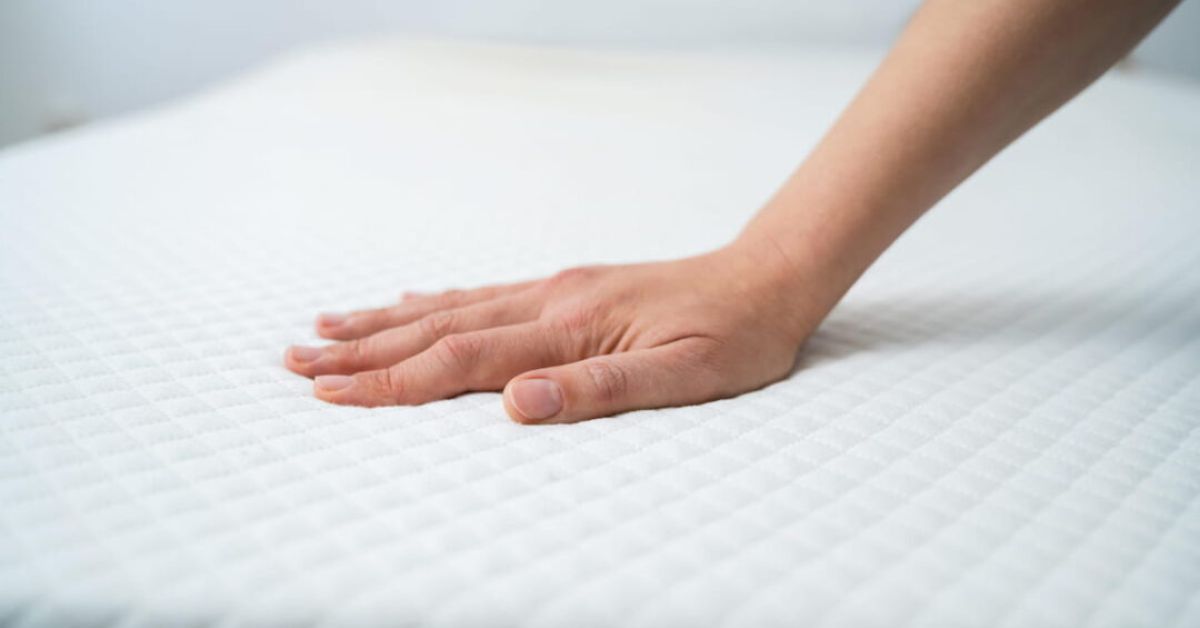LIFESTYLE
How to Incorporate Delta 8 Flower Into Your Wellness Routine

Key Takeaways:
- Discovering what Delta 8 flower is and its properties.
- Strategies for integrating Delta 8 into a holistic wellness routine.
- Guidance on dosage, safety, and legal considerations.
- Tips for choosing quality products and responsible usage.
Table of Contents:
- Introduction to Delta 8 Flower
- The Benefits of Adding Delta 8 Flower to Your Routine
- Understanding Dosage and Method of Consumption
- Legal Status and Safety Considerations
- Choosing the Right Delta 8 Flower for You
- Incorporating Delta 8 for Relaxation and Sleep
- Delta 8 Flower in Stress Management
- Combining Delta 8 with Other Wellness Practices
- Monitoring Your Wellness Journey with Delta 8
- Conclusion: Embracing Delta 8 Flower in Wellness with Responsibility
Introduction to Delta 8 Flower
Delta 8 THC, a cannabinoid known for its unique properties, brings a fresh perspective to the diverse world of wellness supplements. Found naturally in hemp plants, Delta 8 flower offers a milder experience than its more famous counterpart, Delta 9 THC. For those interested in incorporating plant-based elements into their health regimen, Delta 8 offers an intriguing option attributable to its nuanced benefits and federal legality under the 2018 Farm Bill, though individual state laws may vary.
With the surge in popularity of hemp-derived products, Delta 8 flower has emerged as a sought-after choice among wellness enthusiasts seeking alternative remedies. Its distinct effects, characterized by a more subtle psychoactive experience, make it appealing to individuals looking for a gentle introduction to cannabinoids. Furthermore, the legal status of Delta 8 THC adds to its allure, providing consumers with a viable option for exploring the potential benefits of cannabis without the legal complexities associated with Delta 9 THC.
The Benefits of Adding Delta 8 Flower to Your Routine
Incorporating Delta 8 flower into a wellness routine may improve your balance and well-being. Users often report a calmer mindset, enhanced focus, and an improved mood. This cannabinoid’s binding affinity to the CB1 and CB2 receptors in the body can influence various physiological processes, potentially offering support for pain relief, mood regulation, and a heightened sense of comfort.
Moreover, the Delta 8 flower is praised for its more manageable psychoactive effects, making it suitable for individuals seeking relaxation without the intensity associated with Delta 9 THC. Its potential to alleviate symptoms of anxiety and stress has garnered attention from those looking for natural remedies for mental health support. Additionally, the versatility of Delta 8 flower allows users to explore different consumption methods, such as smoking, vaping, or incorporating it into edibles, catering to diverse preferences and lifestyles.
Understanding Dosage and Method of Consumption
When utilizing Delta 8 flower, understanding appropriate dosages is crucial for experiencing its potential benefits without unwanted side effects. The method of consumption can also significantly influence your experience. The flower can be smoked, vaporized, or even infused into edibles. Each method has distinct onset times and durations of effect, and personal preference and health considerations should guide your choice.
Furthermore, starting with a low dose and gradually increasing as needed is advisable, especially for beginners or those sensitive to cannabinoids. It’s essential to pay attention to individual tolerance levels and reactions, as they can vary widely from person to person. Seeking advice from a medical professional or cannabis expert can offer individualized recommendations for dosage and consumption schedules that are catered to your unique requirements and medical circumstances.
Legal Status and Safety Considerations
While Delta 8 THC is federally legal, it remains essential to verify the regulations in your respective state as the legality can vary. Equally important are the safety considerations; always source your Delt’a 8 flower from reputable suppliers known for transparent practices and rigorous product testing, ensuring you consume only the highest quality.
Furthermore, be mindful of potential interactions with medications or existing health conditions, and consult with a healthcare provider before incorporating Delt’a 8 Flower into your wellness routine. Additionally, adhere to recommended dosage guidelines to avoid overconsumption and minimize the risk of adverse effects. By staying informed about legal requirements and prioritizing safety, you can enjoy the potential benefits of Delta 8 THC while reducing possible risks.
Choosing the Right Delta 8 Flower for You
Selecting a strain of Delt’a 8 flower is a personal journey. Some strains may promote relaxation, while others are better suited for invigoration and enhanced creativity. Take time to research and consult with knowledgeable vendors or health professionals to find the perfect match for your intended outcomes.
Incorporating Delta 8 for Relaxation and Sleep
One of the most popular uses for Delt’a 8 flowers is to facilitate relaxation and improve sleep quality. Unwinding with Delta 8 can be a delightful addition to your nightly routine, helping you to disconnect from the stressors of your day and transition gently into a state of restfulness.
Delta 8 Flower in Stress Management
In our fast-paced society, stress is a common affliction. Delt’a 8 flowers might be a supportive ally in stress management due to its reported ability to foster a tranquil mindset without impeding cognitive function, allowing you to maintain composure and focus even on demanding days.
Combining Delta 8 with Other Wellness Practices
The holistic approach to health and wellness is increasingly popular, and Delt’a 8 Flower can complement other practices such as meditation, yoga, or aromatherapy. Its synergistic effects can enhance these experiences, deepening your practice and maximizing the benefits.
Monitoring Your Wellness Journey with Delta 8
As with any new wellness practice, observing and documenting your body’s reactions to the Delt’a 8 flower is essential. Monitoring your experiences will help fine-tune your routine for optimal benefits. Listen to your body and be willing to adjust the types, dosages, and frequency as needed.
Conclusion: Embracing Delta 8 Flower in Wellness with Responsibility
Delt’a 8 flower holds promise as a diverse supplement in the progressive world of health and wellness. However, this novel botanical should be embraced responsibly, with conscientious research and understanding of your health needs and legal parameters. With informed integration and mindful use, the Delt’a 8 flower could become a valuable aspect of your holistic wellness journey.
LIFESTYLE
How Do You Extend the Life of an Aging Mattress?

No matter how high-quality your mattress is, after a specific timeframe, it starts to wear down slowly. How long a mattress lasts mainly depends on the type and material it’s made of. For example, foam mattresses usually last around 7-10 years, while innerspring mattresses may last 5-8 years or more. However, small adjustments in your habits and environment can help you make it last longer.
Here are some effective tips to help you enhance the longevity and durability of your mattress.
Add an Extra Layer of Comfort
When a mattress starts feeling uneven or slightly uncomfortable, adding an extra layer can make a noticeable difference. A mattress topper adds cushioning and reduces pressure on the old surface underneath, distributing your weight more evenly. It also acts like a shield and protects the mattress from direct wear, stains, and moisture, which results in slowing down the aging of your mattress.
Rotate Your Mattress Regularly
Most people stay in the same position on their bed every night, which slowly affects the foam or springs under that specific spot. Rotating your mattress helps fix this imbalance by shifting your sleeping area and allowing other parts of the mattress to carry your weight. It also reduces early sagging and keeps the surface firm.
You don’t need to follow a complicated schedule. A simple rotation every three to four months is enough for most mattresses.
Keep Your Mattress Clean
Aging mattresses often lose comfort not only because of wear but also because dust, sweat, and bacteria build up inside the layers. It affects freshness and can affect your sleep quality. Cleaning your mattress from time to time helps slow this process. You can vacuum the surface to remove dust and use mild cleaning sprays to remove light stains. Always keep the mattress dry to prevent mold and unwanted smells.
Use Proper Support Underneath
Without proper support, even a new mattress can sag early. So, a solid platform or a strong box spring can help distribute your weight evenly and prevent the mattress from sinking in the middle. If your bed frame has slats, make sure they are not too far apart and are strong enough to handle your weight. It will help reduce long-term damage, especially for older mattresses that are already losing some of their structure.
Maintain Good Airflow Around Your Bed
Moisture is one of the biggest enemies of any mattress. When air cannot move freely around your bed, humidity collects inside the mattress and slowly affects its layers. Allowing good airflow is a simple but powerful way to protect an aging mattress. Try not to place the bed directly against the wall, and make sure there is space under the frame for air circulation. You can also use a fan or dehumidifier to keep your mattress dry and fresh.
Protect It From Spills and Sweat
Liquids can weaken the internal layers of a mattress and speed up its aging. Using a washable mattress cover protects your mattress from direct contact with moisture. It also keeps stains from settling into the material. The best thing is that it is much easier to wash than to clean the mattress itself.
Avoid Sitting in the Same Spot
Many people sit on the edge of the bed when tying their shoes, using their phone, or getting ready. This puts more pressure on one small area, which increases the chance of sagging. An aging mattress is already losing its natural strength, so repeated pressure in one place can break down the material faster. Therefore, it’s better to sit on different areas of the bed or use a chair for daily tasks.
Store It Properly When Not in Use
Older mattresses need extra care because they are already sensitive to pressure and moisture. Store the mattress flat instead of standing it on its side, because vertical storage can cause bending and uneven pressure. Use a breathable cover so air can pass through while still protecting it from dust. Avoid plastic wrapping because it traps moisture. Reliable stores, like Rangooli, also provide user manuals to help you understand how to clean and store a mattress.
A Final Word
By following all the aforementioned tips, you can easily add to the overall look and lifespan of your mattress. It not only helps you cut unnecessary replacement costs, but also protects you from health issues of using an old, worn-out mattress.
LIFESTYLE
How Moving to Chicago Transforms Your Social Life in Surprising Ways

City life often promises new energy, but Chicago actually delivers. The people, the pace, and the possibilities reshape your days in ways you don’t expect. From the first week, you notice how neighbors interact, how strangers chat in line, and how often you’re invited somewhere. That’s what makes moving to Chicago so powerful, it doesn’t just change your location; it starts to enhance your daily life in real and exciting ways.
Big City, Bigger Conversations
At first, the city may seem too big for connection. But the opposite is true. You’ll find conversations in line at Trader Joe’s, at dog parks, and even during your morning commute. People here enjoy sharing recommendations and stories, especially with someone new to town.
Next, locals love talking about their favorite restaurants, sports teams, and neighborhoods. This opens the door to natural conversation. Without realizing it, you build relationships across grocery aisles and gym lockers.
Even introverts find their rhythm here. Chicago offers plenty of ways to meet people without forced interactions. Some of the easiest entry points include:
- Joining a casual intramural sports league
- Taking a local art or cooking class
- Becoming a regular at a neighborhood coffee shop
- Volunteering at weekend events or cleanup drives
Each setting brings small talk that often leads to lasting friendships. You don’t have to try hard, the city keeps offering chances to connect.

Alt: People talking
Caption: After moving to Chicago, you will have a lot of conversations with many people
Neighborhood Vibes That Feel Like Mini-Cities
Chicago’s layout helps with connection. Every neighborhood feels like its own little world, complete with favorite diners, local barbershops, and weekend street corners filled with music.
For example, Wicker Park gives off a creative, artsy feel. Lakeview leans toward young professionals and families. Meanwhile, Hyde Park blends historic charm with university buzz. As you settle in, you realize that moving to Chicago means more than relocating—it means choosing a new social setting that shapes your routine.
These neighborhoods don’t isolate you; they ground you. They create the foundation for friendship. They bring you face-to-face with people you’ll recognize at farmer’s markets or community yoga.
Bonding Through Shared Experiences
Chicago throws some of the most unexpected festivals you’ll ever attend. Whether it’s Taste of Chicago, the Air and Water Show, or a tiny taco fest in Pilsen, each event brings people together.
You won’t need to force interaction. Standing in line for food or dancing to live music often starts conversations. The relaxed setting makes it easy to connect without pressure.
Even when you go alone, you rarely feel lonely. People tend to talk, ask questions, or invite you to nearby events. These experiences help create a calendar full of fun, and new faces.
Career Connections Come Naturally
Chicago isn’t just social on the weekends. The workweek brings its own surprises. You’ll meet potential collaborators on public transit, in coworking spaces, or during casual coffee breaks.
Some professionals even find new roles through personal connections rather than job boards. That’s part of what makes the city feel alive. Opportunities often start with small talk, not interviews.
Unlike other major cities, Chicago professionals often chat openly at networking events or company mixers. It’s not stiff or transactional. Instead, people show genuine interest in what you do—and who you are.
You may attend an open mic and meet a recruiter. Or walk into a tech meet-up and walk out with a freelance gig. These aren’t rare events—they’re part of the rhythm here.

Alt: Person putting on a suit
Caption: Job opportunities will come naturally
The Real Impact of the City’s Real Estate Scene
Where you live in Chicago shapes who you meet and what you do. It affects your favorite hangouts, your closest friends, and even your hobbies. A studio near the lake might lead to morning bike rides and rooftop dinners. A walk-up in Pilsen could introduce you to pop-up art shows and late-night tamales.
The real estate market here encourages community. Apartment buildings often host group events. Back patios become shared gathering spots. Neighbors stop to talk because they actually see one another often. This sense of place becomes the start of real friendships.
If you’re thinking about location only in terms of cost, you’re missing half the story. Chicago neighborhoods define more than space—they influence social momentum. Pick your spot with that in mind.
Weekend Escapes Are Accessible From Chicago
Chicago sits in a spot that makes escaping the city both easy and exciting. Its central location means you can reach other major cities and even international borders without much planning. Highways like I-90, I-55, and I-94 connect you to places like Milwaukee, Indianapolis, and Detroit in just a few hours.
Need a bigger break? O’Hare and Midway airports offer quick flights to nearly anywhere. Whether you’re flying to Nashville for a weekend concert or heading to Mexico City, travel options stay wide open. Some locals even map out the best road trips from the US to Mexico, using Chicago as their starting point.
With strong connections in every direction, it’s easy to mix travel with social life. Group getaways become regular habits. New friends often plan weekend escapes together, sometimes by plane, sometimes by car. The trip itself strengthens bonds and creates lasting memories.
Food Meets Friendship Here
Every Chicagoan has a favorite food truck. Some swear by the tacos on 18th Street. Others chase down Korean barbecue near the Loop. No matter your taste, you’ll find a spot worth revisiting, and people worth chatting with while you wait.
Food trucks often park near parks, breweries, and college campuses. That means people eat outside, sit together, and talk. The setup encourages interaction. If you go often, you start to recognize familiar faces and join spontaneous conversations.
Don’t underestimate these moments. A shared bench and good food lead to strong social habits. And if you’re still looking, go online to find the best food trucks near you and plan your next meal with company in mind.

Alt: Food truck
Caption: Food is a big thing on the social scene in Chicago
Why Moving to Chicago Transforms More Than Your Zip Code
Moving to Chicago brings new friendships, work connections, and neighborhood pride. The change starts fast but builds over time. This city opens its doors if you say yes. Show up. Say hi. Be curious. Your social life won’t just improve—it will evolve in ways you never expected.
KW: moving to Chicago
Meta description: Discover how moving to Chicago can enrich your social world, from food trucks to festivals, making every day feel like a fresh adventure.
LIFESTYLE
How to Stay Social After Moving to a New Neighborhood

Alt tag: A smiling couple stands outside their new home, showing how to stay social after moving to a new neighborhood.
Moving to a new neighborhood can feel exciting and overwhelming at the same time. Connecting with others helps ease the transition and creates a sense of belonging. Staying social after moving to a new neighborhood takes effort, but building friendships and social routines plays a big role in feeling comfortable and happy. This process improves mental health, reduces loneliness, and opens doors to new experiences. So, taking small, intentional steps helps make the new place feel like home faster and makes meeting people more natural and enjoyable.
Understand the Benefits of Social Connection
Strong social ties improve mental and physical health; regular interactions reduce stress and boost mood. Therefore, when inviting neighbors, focus on making your guests feel comfortable. Simple gestures like offering refreshments or a warm greeting encourage conversation. Also, feeling at ease helps build trust and lasting friendships. Social connections also promote a sense of safety and belonging in new surroundings. These benefits show why investing time in relationships brings real value. Engaging with others often leads to more opportunities and support in daily life. And reaching out creates a foundation for a happier, healthier lifestyle.

Exploring the neighborhood on foot can lead to spontaneous connections and help build a strong local social life.
Alt ag: A man walks confidently down a city sidewalk.
Attend Local Events to Meet New People
Local events offer great chances to meet others nearby. For instance, you can check bulletin boards, social media, or local websites for upcoming gatherings. Farmers’ markets, festivals, and workshops bring people together naturally. Joining these events encourages conversation and helps build connections without pressure. Showing up regularly increases familiarity with others in the area. Even short visits can lead to new friendships over time. Taking part in local happenings also provides insight into neighborhood culture and interests. This approach makes meeting new people feel easier and more enjoyable.
Join Groups and Volunteer to Build New Connections
Joining clubs or hobby groups helps meet people who share similar interests. These activities create natural opportunities to connect, whether it is through sports, books, or crafts. Volunteering also offers a meaningful way to get involved and meet others. Helping out at schools or shelters fosters strong bonds.
Moving, especially long-distance, can make social life feel challenging at first. Therefore, it’s important to also keep old friendships while building new ones. Regular calls or visits with longtime friends provide emotional support during transitions. Balancing past and present connections eases feelings of loneliness. Group activities offer fresh chances to form new relationships and feel more settled quickly. Taking these steps encourages both personal growth and a fuller social circle.
Use Technology to Find Local Connections
Apps and online groups can also help you stay social after moving to a new neighborhood. They can help discover nearby events and meet people with similar interests. Platforms like Nextdoor or Facebook groups often share updates about neighborhood activities. Joining these networks encourages quick introductions and conversations.
However, online interactions should be approached carefully and respectfully to build trust. Using technology bridges gaps, especially when new to an area. Virtual connections often lead to in-person meetings over time. Staying active in local online spaces makes finding friends easier. Combining online tools with face-to-face efforts creates a balanced way to expand social circles. This approach helps remain connected and engaged in new surroundings.

Simple gestures like a visit with flowers help create warm connections and build lasting neighborly friendships.
Alt tag: A couple greets a neighbor at the door with sunflowers.
Introduce Yourself and Build Neighborly Bonds
Starting conversations with neighbors opens many doors. A simple hello or smile creates a friendly atmosphere. Small gestures like offering baked treats or helping with chores encourage goodwill. Remember to keep your living room guest-ready to welcome visitors comfortably. Showing openness invites neighbors to connect more easily. These actions build trust and familiarity over time. Regularly checking in helps deepen relationships without pressure. Friendly interactions also promote a safer and more supportive environment. Taking these steps consistently makes settling in smoother. Being approachable often leads to lasting friendships and stronger ties within the new neighborhood.
Use Local Spaces, Classes, and Gatherings to Connect and to Stay Social After Moving to a New Neighborhood
Building a social life happens through active participation. Consider these ways to meet others and feel more at home:
- Visit parks, libraries, or coffee shops often to become a familiar face and start casual chats.
- Enroll in local classes or workshops like cooking, fitness, or crafts to meet people with similar interests.
- Organize or join social gatherings such as potlucks, block parties, or neighborhood meetings to create bonds.
Regular attendance at these places boosts chances for meaningful conversations. Shared activities provide natural reasons to connect and keep relationships growing. Taking initiative in social events helps form a supportive network. These approaches make settling into a new area smoother and more enjoyable. Each step builds a stronger social circle over time.
Balance Old and New Relationships for Support
Keeping old friendships offers stability during major life changes. Regularly reaching out helps maintain strong bonds despite distance. At the same time, investing in new relationships builds a fresh support network. Simple shared activities like cooking together create chances to connect. Learning how to make healthier and tastier burgers at home can turn into fun gatherings. Balancing past and present connections provides emotional strength. Both sets of relationships contribute to overall well-being. This approach eases loneliness and builds a reliable social circle. After moving, staying connected across old and new friendships creates a more fulfilling social life.

Hosting small gatherings builds strong bonds and helps create lasting friendships in a new place.
Alt. Tag: A group of friends laughing together indoors.
Make Social Connections Work for You
Knowing how to stay social after moving to a new neighborhood requires patience and the willingness to reach out. It’s normal to face awkward moments or slow starts, but consistent effort leads to meaningful relationships. Choosing activities that match personal interests creates more enjoyable social interactions. Balancing old friendships with new ones keeps emotional support strong. Eventually, those social ties bring a sense of stability and enjoyment. Taking control of social life helps turn a new neighborhood from unfamiliar to friendly, making everyday life more fulfilling and connected.
-

 TECHNOLOGY2 years ago
TECHNOLOGY2 years agoElevating Game Day Eats: A Guide to Crafting Crowd-Pleasing Sliders
-

 ENTERTAINMENT2 years ago
ENTERTAINMENT2 years agowave_of_happy_: Your Ultimate Guide
-

 FASHION2 years ago
FASHION2 years agoGPMsign Fashion: Redefining Style with Purpose
-

 TECHNOLOGY1 year ago
TECHNOLOGY1 year agoTrader Joe’s Dayforce: Revolutionizing Workforce Management
-

 FOOD2 years ago
FOOD2 years agoAltador Cup Food Court Background: A Culinary Extravaganza Unveiled
-

 HOME IMPROVEMENT1 year ago
HOME IMPROVEMENT1 year agoWhat Kitchen Renovation Companies Offer Beyond Basic Remodeling
-

 SPORTS2 years ago
SPORTS2 years agoScore Chaser Sporting Clays: A Thrilling Pursuit of Precision
-

 NEWS2 years ago
NEWS2 years agoNyl2 Kemono: Unveiling the World
